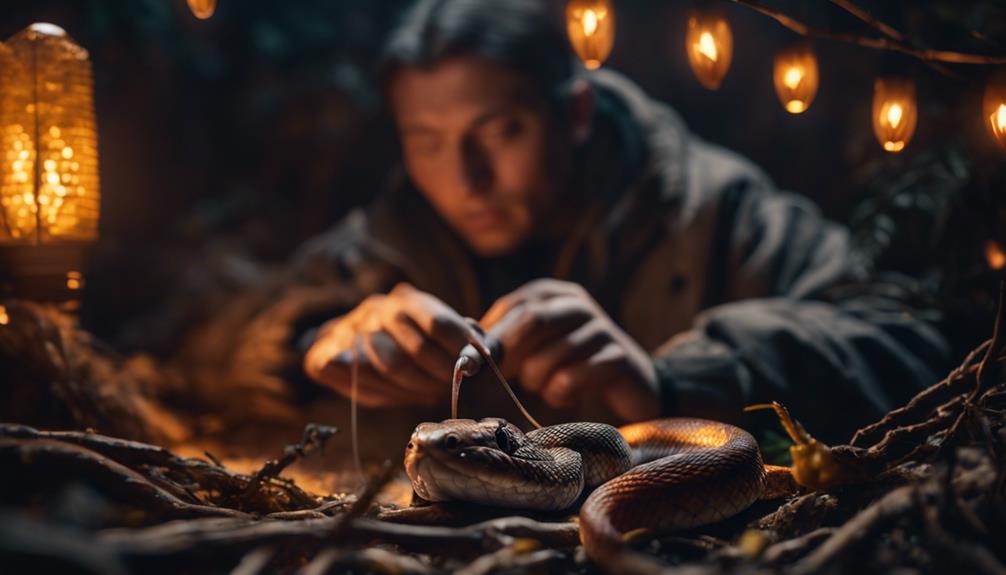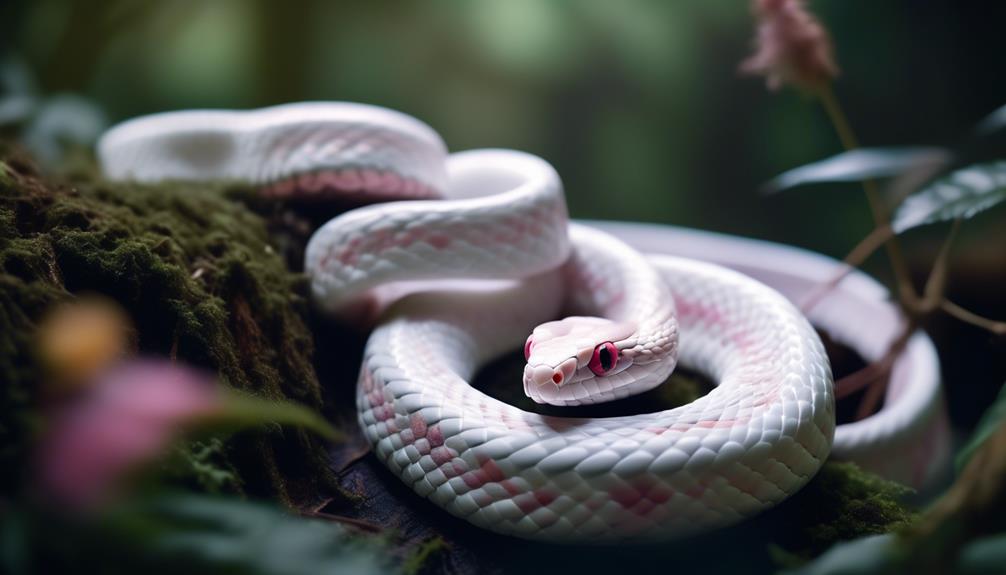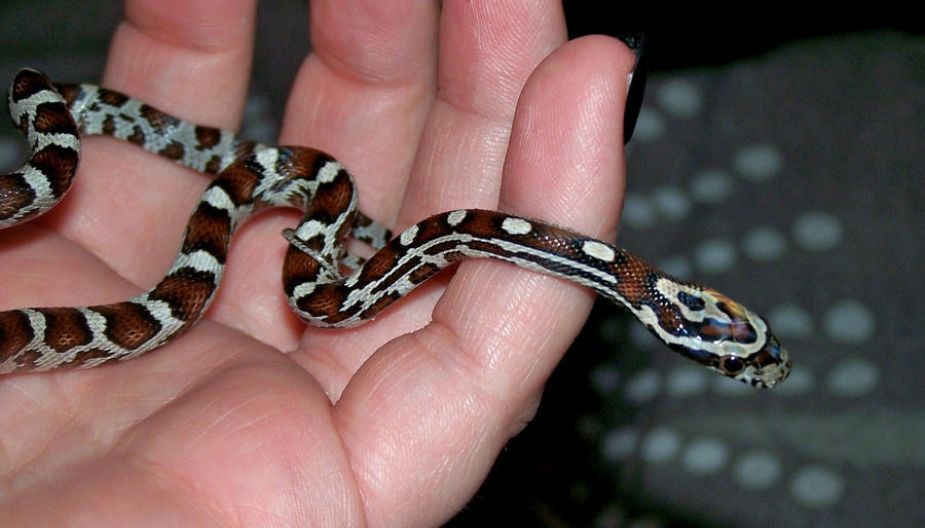When your corn snake becomes a selective eater, it’s equivalent to solving a complex puzzle, right? Gaining insights into their inclinations and routines can pose a tough yet fulfilling job. However, don’t worry, as there are subtle methods and expert advice that could be the answer to encouraging your snake back to its eating habits.
By examining the details of their behavior and surroundings, you may discover the answer to this fascinating problem. So, let’s delve into the realm of corn snake care collectively and expose the hidden facts.
To encourage a corn snake that’s not eating, ensure it has a stress-free habitat and offer food no larger than its widest part. Sometimes, gently warming the prey or changing the feeding schedule can also stimulate appetite.
Temperature and Humidity Adjustments
To guarantee your Corn Snake’s health and appetite, maintaining ideal temperature and humidity levels in its enclosure is essential. Corn Snakes, like other reptile species, rely on warmth for proper digestion and appetite stimulation. Cold temperatures below 75F can lead to lethargy and digestive issues in these snakes. To create a suitable environment, use thermostats to control heating elements and make sure the enclosure stays within the recommended temperature range. Additionally, correct humidity levels are important to prevent skin and respiratory problems. Different snake species have specific temperature and humidity requirements, so it’s important to research and meet these needs accordingly for your Corn Snake.
To help maintain the ideal conditions, consider providing warm water baths for your Corn Snake. This can aid in shedding and hydration, contributing to overall health. By paying close attention to temperature and humidity levels, you can support your snake’s well-being and prevent potential health issues related to improper environmental conditions.
Offering Variety in Food
Introducing a variety of prey options can effectively stimulate a picky eater like a corn snake. Offering different types of food such as mice, rats, chicks, or lizards can entice the snake to eat. Rotating between frozen-thawed and live prey can appeal to the snake’s hunting instincts, making feeding time more engaging. Trying out different colors, sizes, and textures of prey items can pique the snake’s interest in feeding, mimicking the diverse diet they would have in the wild. Consulting with a reptile vet for guidance on safe and appropriate food choices for your Corn Snake is crucial to make sure they are receiving the necessary nutrients.
| Variety in Food | Benefits |
|---|---|
| Different prey options | Stimulates the snake’s interest in feeding |
| Rotating between prey types | Appeals to hunting instincts |
| Trying different textures | Encourages the snake to explore food options |
Encouraging Prey Movement
To engage a corn snake’s hunting instincts and stimulate its feeding response, gently simulate prey movement when offering food. Corn snakes, like many species, respond well to prey that appears alive. When presenting the food item, try wiggling it slightly to mimic the movements of live prey.
This realistic manner of prey movement can trigger the snake’s natural hunting instincts, making it more likely to strike and eat. You can achieve this by gently shaking or dragging the prey in front of the snake, creating the illusion of activity.
Assisting With the Shedding Process
Assisting a corn snake with shedding requires understanding the signs of the shedding process and providing appropriate care to facilitate a smooth transformation. When your snake is about to shed its skin, there are specific indicators to look out for, such as paler scales and milky eyes.
During this time, it’s essential to leave your snake alone to minimize stress and disturbance. To aid in the shedding process, you can use shedding agents like damp towels or specialized sprays to soften the old skin, making it easier for your snake to shed.
However, if your snake experiences difficulty shedding, which can result in rough sheds, it may be necessary to provide further assistance or consider a vet visit for professional help. Remember, being attentive to your corn snake’s shedding needs is vital for its overall health and well-being.
Veterinary Check-Up and Health Evaluation
A veterinary check-up is essential to evaluate your corn snake’s overall health and pinpoint any underlying medical conditions affecting its appetite. When dealing with feeding refusal in your snake, consulting with an experienced reptile vet can provide important insights.
These professionals can conduct a thorough health evaluation to identify issues such as respiratory infections, mouth rot, or parasites that might be causing the feeding issues. Diagnostic tests may be necessary to determine the exact cause of your snake’s lack of appetite, allowing the vet to create a tailored treatment plan.
Seeking guidance from a reptile specialist guarantees that you receive expert advice on addressing the specific health concerns impacting your snake’s eating behavior. Timely veterinary care is crucial to prevent further complications and safeguard the well-being of your corn snake.
Trusting in the expertise of a knowledgeable reptile vet can help you navigate through any appetite issues your snake may be experiencing.
Frequently Asked Questions
What to Do if My Corn Snake Isn’t Eating?
If your corn snake isn’t eating, monitor weight and behavior. Confirm proper temperature gradient, feeding schedule, hide options, and prey size. Minimize handling stress, try scenting techniques, and seek a vet check-up for extended refusal. Adapt for environmental enrichment.
How Do You Get a Snake That Won’t Eat to Eat?
To get a snake that won’t eat to start eating, adjust the prey’s temperature, stick to a consistent feeding schedule, try appetite stimulants like scented prey, confirm proper hydration, reduce handling stress, offer varied feeders, provide adequate enclosure size, and seek a vet check-up.
How Many Days Can a Corn Snake Go Without Eating?
A corn snake can go without eating for 2-3 months due to its slow metabolism. Monitoring behavior and weight is essential. Guarantee a proper feeding schedule, temperature gradient, and humidity levels. Watch for stress factors and consider scenting prey or offering variety. Regular vet check-ups are necessary.
How Do You Get a Picky Corn Snake to Eat?
To help a picky corn snake eat, pay attention to its behavioral cues. Adjust the feeding schedule, prey size, and temperature. Create a cozy feeding environment, reduce handling stress, and guarantee a health check. Consider appetite stimulants if needed.
Conclusion
You now possess the ultimate power to transform your corn snake’s eating habits!
By making simple adjustments to their environment, offering a diverse menu, and providing assistance during shedding, you can unleash their appetite like never before.
Remember, a quick trip to the vet can reveal any hidden health issues.
With these tips, your corn snake will soon be devouring meals with gusto and thriving in their habitat like a true serpent superstar!


